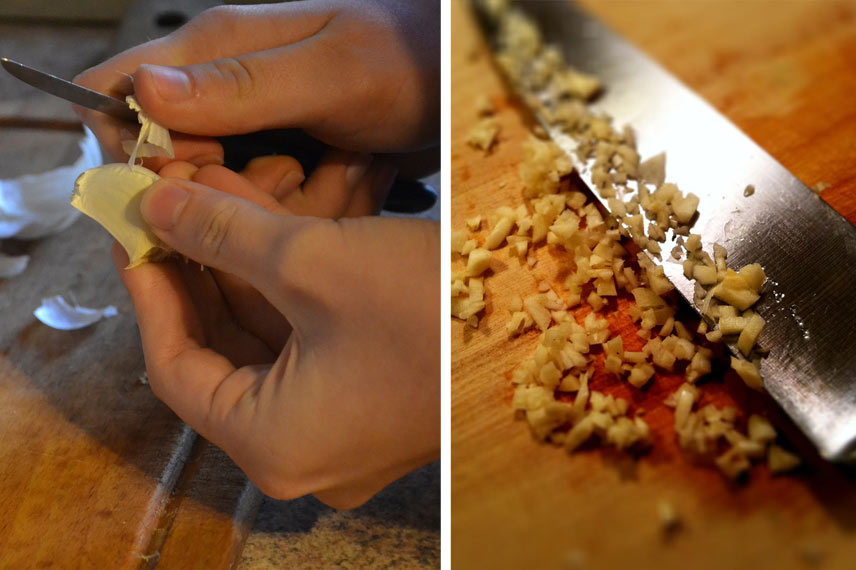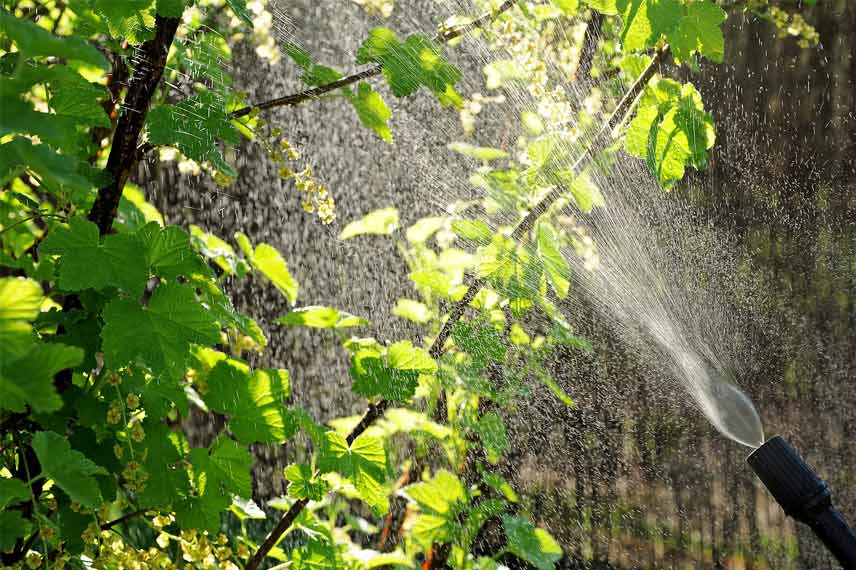Garlic Spray, or more accurately garlic decoction, is highly useful in the vegetable garden, orchard, and for certain flowering plants like roses. The properties of garlic provide a powerful and completely natural means of combating pests and numerous diseases.
As a decoction, Allium sativum is used preventively against damping-off. As a curative treatment, garlic spray helps eradicate aphids, mites, and caterpillars, as well as treat various fungal diseases such as peach leaf curl, blight, rust, and powdery mildew...

Best of all, garlic decoction can be easily prepared with minimal equipment. Discover here the garlic spray recipe and its various uses for your plants.
Garlic Spray or Garlic Decoction? The Importance of Terminology
Commonly referred to as "garlic spray," this preparation is actually a decoction. While tomatoes, nettles, ferns, and comfrey are more effective as fermented plant teas, garlic's properties are far superior as a decoction.
Thus, garlic spray is often mistakenly used instead of garlic decoction. However, the distinction matters because a decoction is not prepared the same way as a fermented tea.
Indeed, a decoction requires boiling and does not involve fermentation, unlike fermented teas. Similarly, fermented teas are always made from plant foliage, which isn’t necessarily the case for decoctions, particularly garlic decoction.
Preparing Garlic Decoction
Making garlic spray is very simple and requires common household items.
Equipment Needed
- 1 knife
- 1 pot
- 1 sieve (or a fine cloth as an alternative)
- 1 funnel
- 1 plastic container
- 5 litres of water
- 10 cloves of common garlic
Preparation Steps

1. Start by roughly chopping the ten garlic cloves.
2. Place them in a pot filled with five litres of water.
3. Bring the mixture to a boil.
4. Cover with a lid and simmer for 20 minutes.
5. Let the mixture cool for an hour, keeping the lid on.
6. After resting, strain the decoction using the sieve to remove any residue.
7. Pour the decoction into the plastic container using the funnel to avoid spills.

Note: Garlic decoction should be used quickly, as it keeps for only a few days. Rather than discarding excess, use it on other garden plants.
Bonus Tip
Bay leaves enhance garlic decoction’s effectiveness thanks to the bactericidal properties of Laurus nobilis, which reinforce its action.

1. Prepare the garlic spray as described above.
2. Let the decoction steep for 4 days.
3. After this time, infuse 40g of bay leaves in 1.5L of water.
4. Strain and mix this bay infusion with your garlic decoction.
5. Apply to the vegetable garden once cooled.
Benefits of Garlic Decoction in the Garden
In the garden, garlic decoction serves two main purposes.
First, garlic decoction acts as a repellent against many common garden pests. Its strong odour deters unwanted visitors, including:
- aphids;
- caterpillars, particularly cabbage whites;
- and mites.
Note: Growing garlic in your vegetable garden also repels pests.
Garlic spray also helps protect plants from numerous pathogenic fungi.

Tomato plant affected by blight © Goldlocki
These include:
- Phytophtora infestans, responsible for blight, a fungal disease affecting many plants (including vines, tomatoes, potatoes, lettuce, and squash);
- ascomycete fungi, causing powdery mildew, a common vegetable garden disease also known as white rot;
- Puccinia recondita, responsible for rust, which weakens many plants;
- Capnodium oleaginum or Fumago salicina, causing sooty mould, a disease resulting from honeydew secretions of sap-sucking insects (like aphids);
- Botrytis, Fusarium, Rhizoctonia, Sclerotinia, Phyhium, Phoma... Responsible for damping-off, affecting young seedlings;
- Monilia laxa and Monilia fructigena, causing brown rot, also known as fruit rot;
- and Taphrina deformans, responsible for peach leaf curl, which deforms leaves and damages fruit trees.
How to Use Garlic Decoction on Plants
Before starting, note that garlic decoction is quite potent. Apply it in the evening rather than during the day to avoid leaf burn.
Remember, this decoction works as both a preventive and curative treatment, provided it’s used in controlled proportions.
Using Garlic Spray as a Preventive Treatment
Using a spray bottle, apply undiluted garlic decoction to foliage of susceptible plants. Repeat every 3 to 4 days for 12 days.

To prevent damping-off, water seedlings with the decoction using a watering can with a rose. Apply at the same frequency as above.
Using Garlic Decoction as a Curative Treatment
For active fungal infections, use garlic decoction for its fungicidal properties.
Again, apply undiluted garlic spray by spraying it onto leaves. Repeat daily for a week.



































Comments